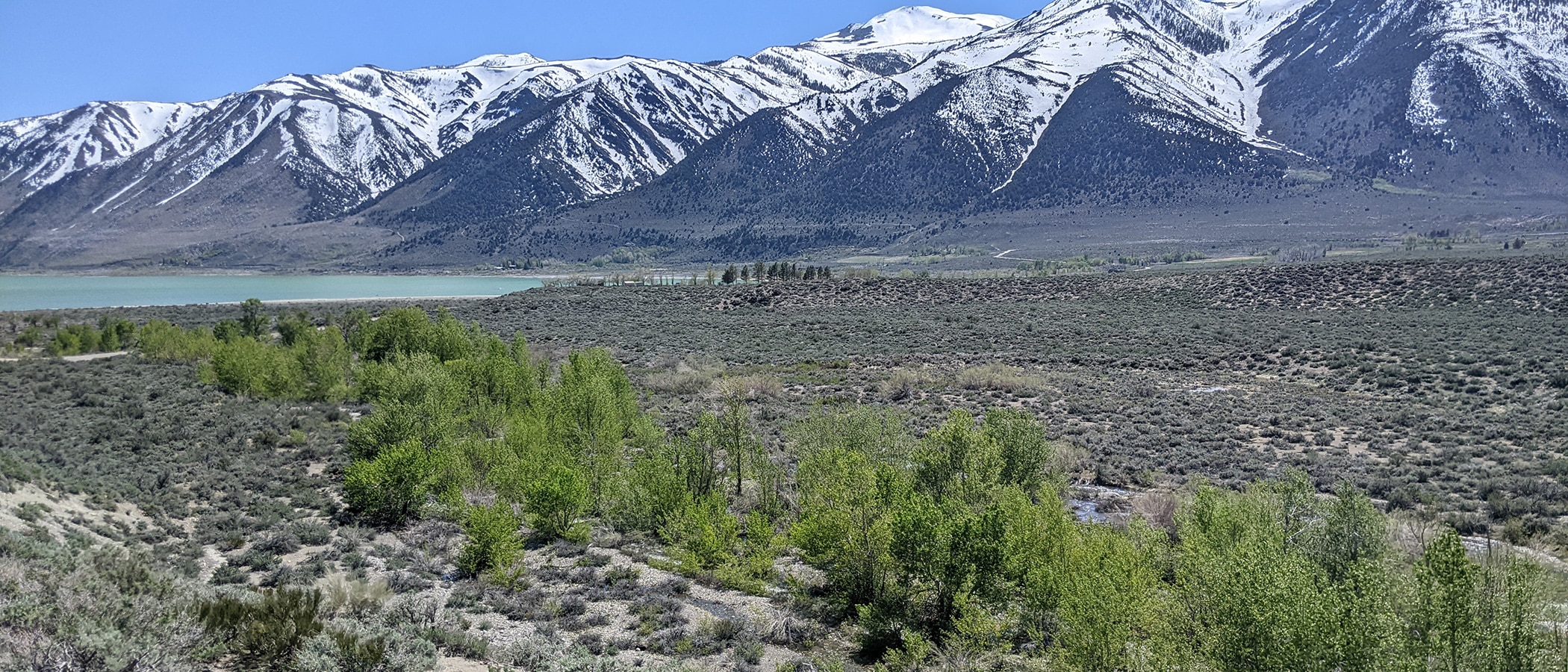
Amended settlement returns streamflows to Mono Lake’s third-largest tributary
The Mono Lake Committee is dedicated to protecting and restoring Mono Lake and its tributary streams, but while protection and restoration were afforded to four of Mono Lake’s major creeks (Rush, Lee Vining, Parker, and Walker) in 1994 by the California State Water Resources Control Board, Mono Lake’s third largest tributary, Mill Creek, has remained excessively diverted for decades. That officially changed in November 2022 with the signing of the First Amendment to the Lundy Hydroelectric Project Settlement, which guarantees water will be delivered to Mill Creek as required by established water rights.
Finding a new solution to an old problem
An analysis conducted by the Committee in 2011 found that over the previous 20-year period, nearly 80% of Mill Creek’s water had been diverted due to inadequate infrastructure owned and operated by Southern California Edison (SCE). This means that Mill Creek received less than half of the water it should have received according to court-decreed water rights. As a result, excessive diversions significantly impacted and degraded the bottomlands of Mill Creek where a once robust wooded wetland has been nearly wiped out.
It was this pattern of excessive diversions and environmental degradation that led to a 2005 settlement agreement. The 2005 settlement was signed by seven parties consisting of the Committee, SCE, US Forest Service, Bureau of Land Management, California Department of Fish & Wildlife, California Trout, and American Rivers. The parties sought to establish minimum flow requirements for Mill Creek below the Lundy Reservoir (there were none at the time) as well as to ensure that SCE’s hydropower operations wouldn’t harm existing water rights. Original plans included building a new water conveyance system, but that system proved too expensive and logistically challenging to implement. By 2017, with SCE stymied in construction of the critical infrastructure, the parties reconvened at the request of SCE to see if an amendment to the settlement could be agreed on in order to achieve the same key objectives.
Collaboration key to success
Amending the 2005 settlement took five years of analysis, field testing, discussion, and collaboration between the seven settlement parties. But thanks to that effort, SCE is now able to accurately track, report, and deliver Mill Creek water as part of their normal hydroelectric operations, including during emergency conditions like in March 2023 when the Lundy powerhouse was the sole power supply for Mono City amidst emergency snow and avalanche conditions. New tools and guidelines developed collaboratively through the amended settlement process will now allow for more accurate water deliveries to water rights holders and provide more transparent information to interested parties, all while delivering larger and more consistent natural flows to Mill Creek. These increased flows will help to restore vital cottonwood and willow riparian habitats, maintain a multi-channel stream network, and promote more productive lake delta habitat for waterfowl and shorebirds.
A new landscape for the future of Mill Creek restoration
The finalization and implementation of this amended settlement is a major restoration milestone for Mill Creek, but the Committee’s work will not end here. We will continue to collaborate with settlement partners, water rights holders, and other parties to make sure the settlement is being fulfilled and working. We will work to implement new restoration opportunities for Mill Creek now that it will reliably receive larger and more natural flows. And we will continue to share the restoration progress and success at Mill Creek with our members and advocates who make this work possible.
This post was also published as an article in the Summer 2023 Mono Lake Newsletter. Top photo by Robbie Di Paolo.
